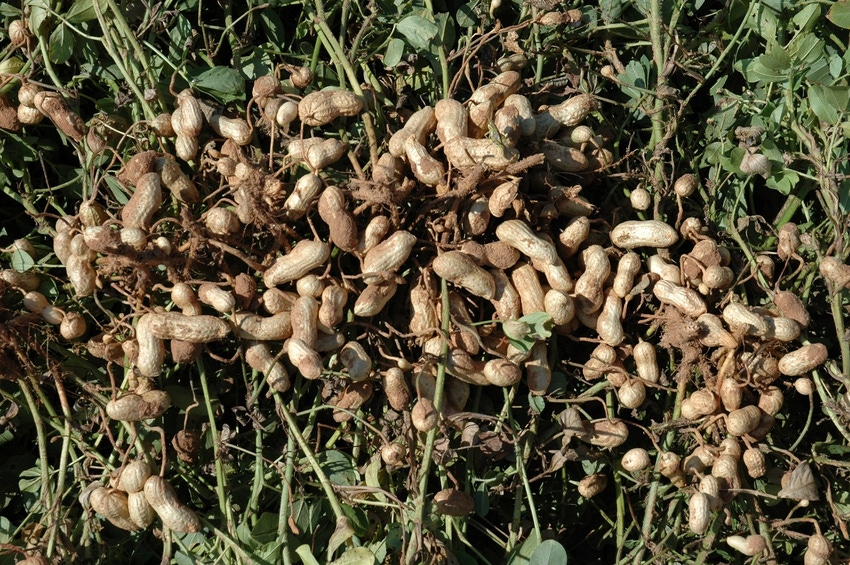
The Texas peanut crop, delayed early by heavy planting-time rain, has caught up and expectations are that the crop will be average and maybe a little better.
“From everyone I've talked to and the peanuts I've seen, our maturity caught up,” says Shelly Nutt, executive director, Texas Peanut Producers Board in Lubbock.
“With the cooler temps and rain in May and June, we were concerned about a very immature crop, but the sustained warm temps in August and September pushed it,” she said.
Farmers are hopeful,” she said.
“Clint White from Vernon said, ‘We're two weeks away from digging and the peanuts look fair.’ When I asked what he meant by fair, he said, ‘Yields look like they'll be average, maybe 2 tons. There's a little pod rot but we're not treating it this late in the season.’ He's growing Florida Fancy and seed runners. He thinks he'll dig the first week of October.
“I got a text from Michael Newhouse from Wellington area and he said, ‘I think for the most part we are only going to be maybe a week late digging, hopefully by the 10th. The peanuts look really good, surprisingly! We have sprayed a late shot of Headline or other fungicides in our area because of cooler temps and rains forecasted. The warm temps have slowed down the leaf spot we have been trying to prevent.
‘If September behaves, I think we should have a heck of a crop.’”
For the latest on southwest agriculture, please check out Southwest Farm Press Daily and receive the latest news right to your inbox
Nutt said Jeff Roper, in Yoakum County, had just cranked up his digger to turn up his organic Valencia's. “I expect to see a bunch running by this time next week. I haven't heard of many that thought their yields would be as good as Newhouse, but everyone feels like average to maybe a little better for the year,” she said.
Kerry Siders, Texas AgriLife Extension integrated pest management specialist in Hockley and Cochran Counties, says acreage for the two counties is near 13,000, down from 2014. “Yield prospects are good as the peanuts tended to bloom strong early, and pegging began while we were still receiving good moisture.
“At about 90 days from planting we did protect both the foliage and developing pods from various disease issues successfully. Irrigation was critical as we moved into the later part of July, and especially in August as it both heated up and dried out. This did reduce pressure from disease.”
He said insect pest infestations have been relatively light. “Only a few foliage feeders were noted but none required action. Weeds are always a battle; however, most producers did a very good job with residual herbicides and limited problems occurred.”
He said scraping peanut hulls now indicates that some digging could occur over the next few weeks.
About the Author(s)
You May Also Like






